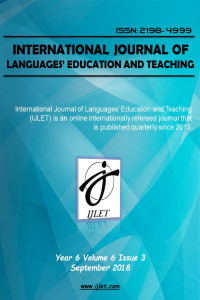Abstract
King Rother epic is a German epic that emerged in the twelfth century and consists of a total of 5197 verses. Except for the last lines, the entire work has survived until today. It is possible to say that the recognition rate of the relevant epic is very low in Turkey, as the studies in Turkey related to the work in question are very limited. From a historical reality point of view, there is no Emperor named “Rother” in history, and the hero is a fictional personality. In order to create the main character of the work, a fictional hero was created using different historical personalities, and as material, it was partially lived in different periods of European history and it was used in the memories of the people. The work focuses on a series of adventures as King Rother approached the daughter of the Eastern Roman Emperor Constantine to marry. The conflict between the two kings is also a reflection of the ongoing struggle of domination between the Eastern and Western Roman Empires in the story where Constantine represented East Rome and Rother represented West Rome. In this study, other's intention was to answer the question whether the marriage was based on emotional causes, or whether it was one of the political marriages to strengthen or strengthen the power we have seen in history. The first part of the study focused on the summary of the work, its characters and its relation to historical reality, and then briefly addressed the understanding of marriage in medieval Europe. In the last section, the reasons that make the marriage of Rother necessary were examined by taking into consideration the conditions of the period in which the work was made.
Keywords
References
- Arak, H. (2006). Alman Halk Kahramanı Kral Rother İle Türk Halk Kahramanı Seyyid Battal Gazi’nin
- Tarihsel Gerçekliği. Milli Folklor 18. 72(2006), s. 47-57.
- Ayan, Engin. Orta Çağ Türk Devletlerinde Hanedan Evlilikleri. Ankara: Gece Kitaplığı.
- Brauers, P. (2011). Hochzeitsbräuche. Nordersdedt: Books on Demand GmbH.
- Bumke, J. (1986). Höfische Kultur. Literatur und Gesellschaft im hohen Mittelalter. Band 2. München: dtv.
- Demirkent, I. (1996). Haçlılar. İslam ansiklopedisi. Cilt: 14. (525-546). Ankara: Diyanet Vakfı Yayınları. Goetz, H. W. (1991). Leben im Mittelalter vom 7. bis zum 13. Jahrhundert. München: C. H. Beck.
- Kägler, B. (2014). Dynastische Ehen in der Frühen Neuzeit: Partnerwahl zwischen Sozialprestige und Außenpolitik. Geschichte in Wissenschaft und Unterricht 64 (2014), s. 5–20.
- Kottje, R. (1990). Eherechtliche Bestimmungen der germanischen Volksrechte. Frauen in Spätantike und Frühmittelalter. (Ed. Werner, A.). Sigmaringen: Thorbecke, s. 211-220.
- Kramer, G. (1961). König Rother. Berlin: Verlag der Nation.
- Meier, F. (2005). Liebe, Lust und Leidenschaft im Mittelalter. Der Genderansatz als Zugang zum mittelalterlichen Geschlechtsverständnis. OPUS W 1(2005), s. 1-53. Erişim tarihi: 21.02.2018, https://hsbwgt.bsz-bw.de/frontdoor/index/index/docId/5. 31 Mart 2018.
- Mikat, P. (1971). Ehe. In: Handwörterbuch zur deutschen Rechtgeschichte. Bd. 1. s. 809 – 833.
Abstract
Kral Rother destanı toplam 5197 mısradan oluşan 12. yüzyılda ortaya çıkmış bir Alman destanıdır. Son mısralar hariç eserin tamamı günümüze kadar ulaşabilmiştir. Söz konusu eserle alakalı Türkiye’de yapılan çalışmalar son derece sınırlı olduğundan, ilgili destanın bilinirlik oranının Türkiye’de çok düşük olduğunu söylemek mümkündür. Tarihsel gerçeklik açısından bakıldığında Avrupa tarihinde “Rother” adında bir imparatorun olmadığı ve kahramanının kurmaca bir kişilik olduğu görülmektedir. Destanda eserin ana karakterini oluşturmak için farklı tarihi kişilikler kullanılarak hayali bir kahraman yaratılmış, malzeme olarak da Avrupa tarihinin farklı dönemlerinde kısmen yaşanmış ve halkın belleğinde iz bırakan hadiseler kullanılmıştır. Eser, kral Rother’in evlenmek için Doğu Roma İmparatoru Konstantin’in kızına talip olması neticesinde yaşanan bir dizi macerayı konu etmektedir. Konstantin’in Doğu Roma’yı, Rother’in ise Batı Roma’yı temsil ettiği hikâyede, iki kral arasındaki çatışma aynı zamanda Doğu ve Batı Roma İmparatorlukları arasında süregelen hâkimiyet mücadelesinin de bir yansımasıdır. Bu çalışmayla, Rother’in niyetlendiği evliliğin duygusal nedenlere mi dayandığı, yoksa tarihte bolca örneğine rastladığımız güç devşirme veya pekiştirme amaçlı siyasi evliliklerden birisi mi olduğu sorusunun cevabı aranmıştır. Çalışmanın ilk bölümünde eserin özeti, karakterleri ve tarihsel gerçeklikle ilişkisi üzerinde durulmuş ve devamında ortaçağ Avrupa’sının evlilik anlayışına kısaca değinilmiştir. Son bölümde ise Rother’in evliliğini gerekli kılan nedenler, eserin ortaya çıkmış olduğu dönemin şartları da ele alınarak incelenmiştir.
Keywords
References
- Arak, H. (2006). Alman Halk Kahramanı Kral Rother İle Türk Halk Kahramanı Seyyid Battal Gazi’nin
- Tarihsel Gerçekliği. Milli Folklor 18. 72(2006), s. 47-57.
- Ayan, Engin. Orta Çağ Türk Devletlerinde Hanedan Evlilikleri. Ankara: Gece Kitaplığı.
- Brauers, P. (2011). Hochzeitsbräuche. Nordersdedt: Books on Demand GmbH.
- Bumke, J. (1986). Höfische Kultur. Literatur und Gesellschaft im hohen Mittelalter. Band 2. München: dtv.
- Demirkent, I. (1996). Haçlılar. İslam ansiklopedisi. Cilt: 14. (525-546). Ankara: Diyanet Vakfı Yayınları. Goetz, H. W. (1991). Leben im Mittelalter vom 7. bis zum 13. Jahrhundert. München: C. H. Beck.
- Kägler, B. (2014). Dynastische Ehen in der Frühen Neuzeit: Partnerwahl zwischen Sozialprestige und Außenpolitik. Geschichte in Wissenschaft und Unterricht 64 (2014), s. 5–20.
- Kottje, R. (1990). Eherechtliche Bestimmungen der germanischen Volksrechte. Frauen in Spätantike und Frühmittelalter. (Ed. Werner, A.). Sigmaringen: Thorbecke, s. 211-220.
- Kramer, G. (1961). König Rother. Berlin: Verlag der Nation.
- Meier, F. (2005). Liebe, Lust und Leidenschaft im Mittelalter. Der Genderansatz als Zugang zum mittelalterlichen Geschlechtsverständnis. OPUS W 1(2005), s. 1-53. Erişim tarihi: 21.02.2018, https://hsbwgt.bsz-bw.de/frontdoor/index/index/docId/5. 31 Mart 2018.
- Mikat, P. (1971). Ehe. In: Handwörterbuch zur deutschen Rechtgeschichte. Bd. 1. s. 809 – 833.
Details
| Primary Language | Turkish |
|---|---|
| Subjects | Language Studies (Other), Turkish Language and Literature (Other) |
| Journal Section | Research Article |
| Authors | |
| Publication Date | September 30, 2018 |
| Published in Issue | Year 2018 Volume: 6 Issue: 3 |


